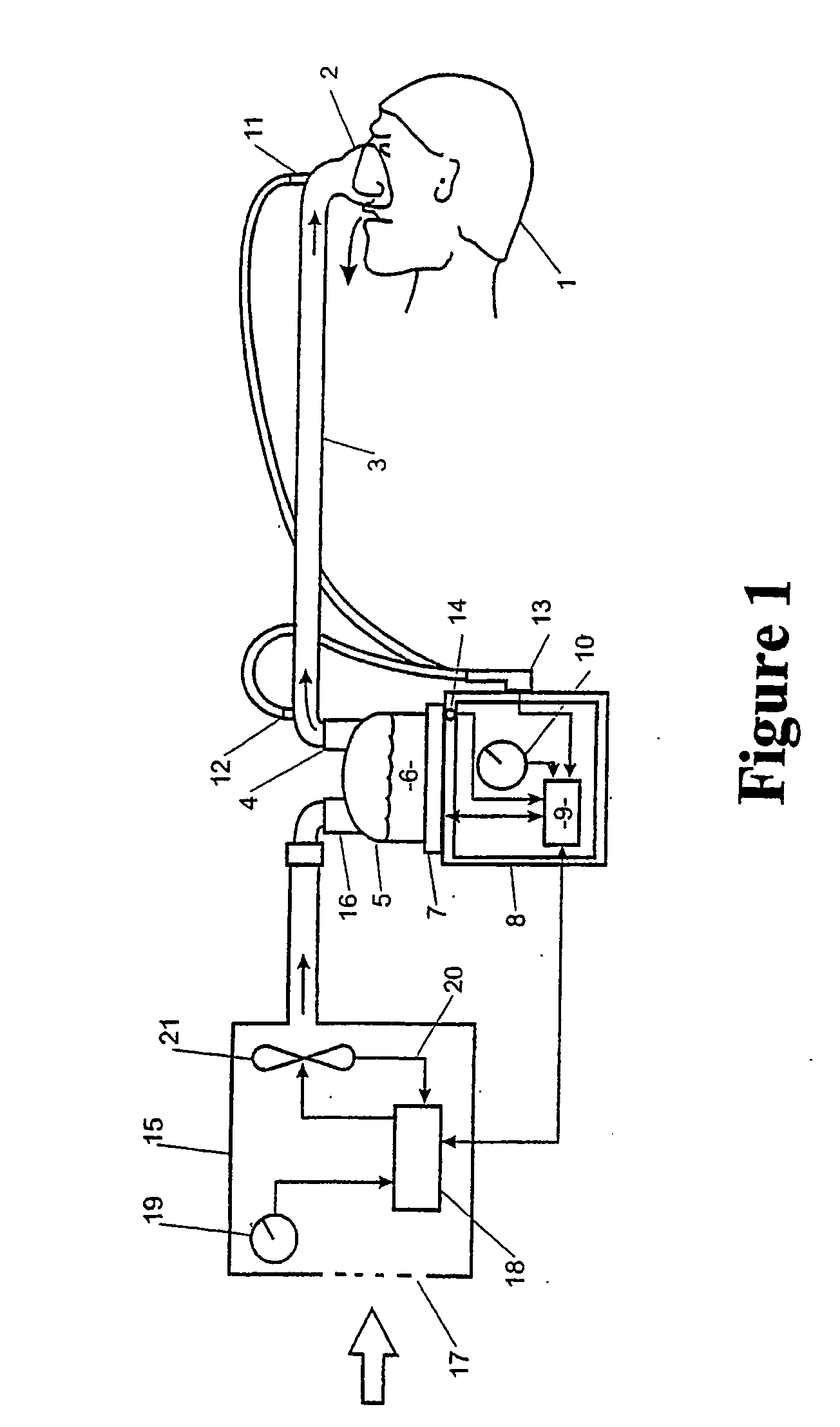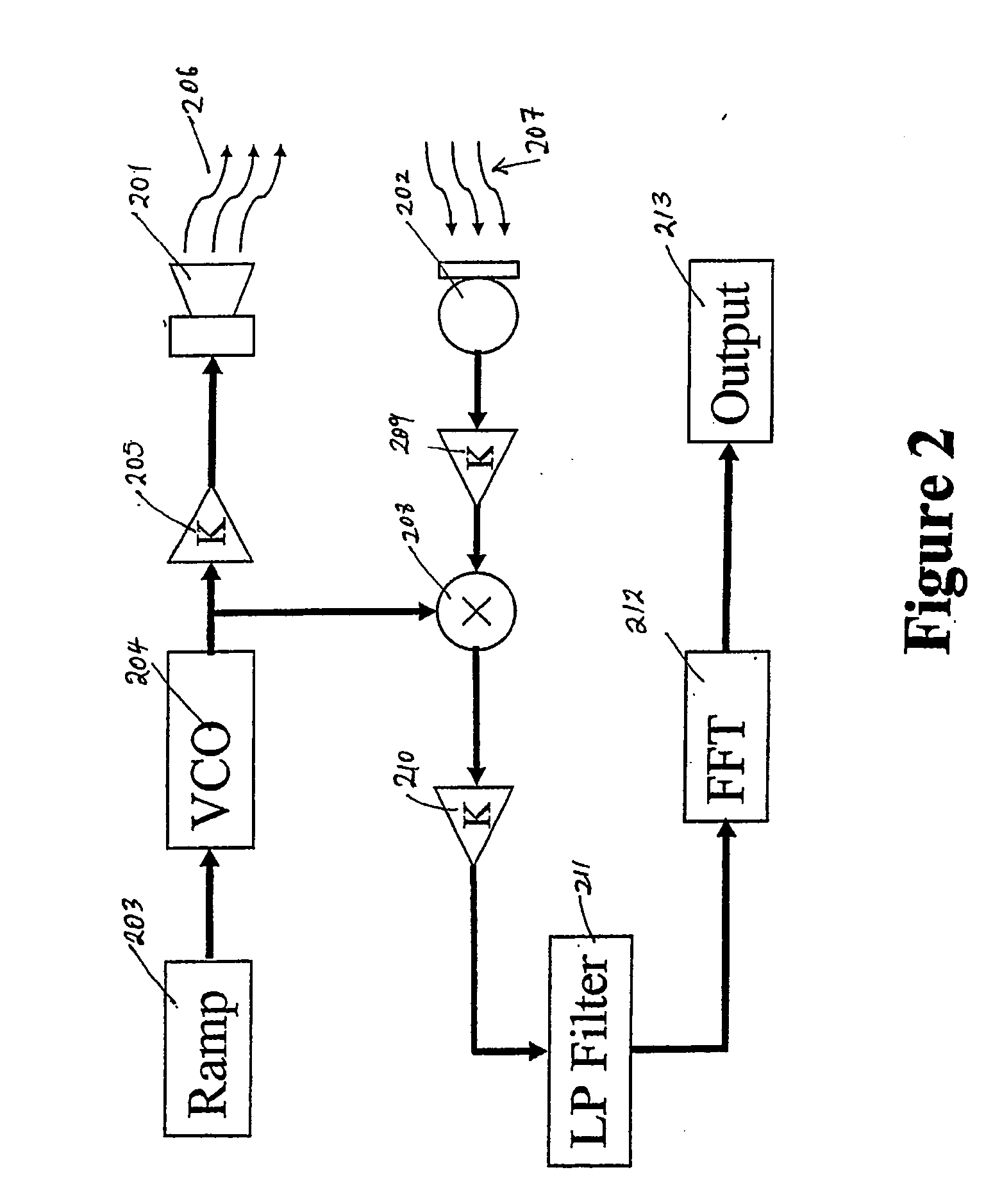Respiratory apparatus and methods of respiratory treatment
a respiratory treatment and respiratory apparatus technology, applied in the field of respiratory treatment apparatus and respiratory treatment, can solve the problems of osa sufferers experiencing daytime drowsiness and irritability, affecting sleep, and affecting sleep quality
- Summary
- Abstract
- Description
- Claims
- Application Information
AI Technical Summary
Benefits of technology
Problems solved by technology
Method used
Image
Examples
Embodiment Construction
[0057] It will be appreciated that the method and apparatus for detecting apnoea as described in the preferred embodiment of the present invention can be used in respiratory care generally or with a ventilator but will now be described below with reference to its use in a humidified Continuous Positive Airway Pressure (CPAP) system. CPAP System
[0058] With reference to FIG. 1 a CPAP system is shown in which a patient 1 is receiving humidified and pressurised gases through a nasal mask 2 connected to a humidified gases transportation pathway or inspiratory conduit 3. It should be understood that delivery systems could also be VPAP (Variable Positive Airway Pressure) and BIPAP (Bi-level Positive Airway Pressure) or numerous other forms of respiratory therapy. Inspiratory conduit 3 is connected to the outlet 4 of a humidification chamber 5 which contains a volume of water 6. Inspiratory conduit 3 may contain heating means or heater wires (not shown) which heat the walls of the conduit ...
PUM
 Login to View More
Login to View More Abstract
Description
Claims
Application Information
 Login to View More
Login to View More - R&D
- Intellectual Property
- Life Sciences
- Materials
- Tech Scout
- Unparalleled Data Quality
- Higher Quality Content
- 60% Fewer Hallucinations
Browse by: Latest US Patents, China's latest patents, Technical Efficacy Thesaurus, Application Domain, Technology Topic, Popular Technical Reports.
© 2025 PatSnap. All rights reserved.Legal|Privacy policy|Modern Slavery Act Transparency Statement|Sitemap|About US| Contact US: help@patsnap.com



